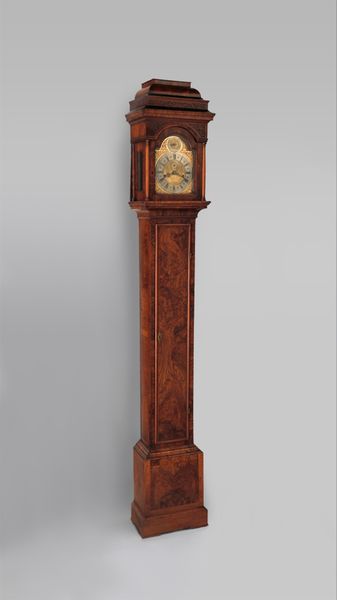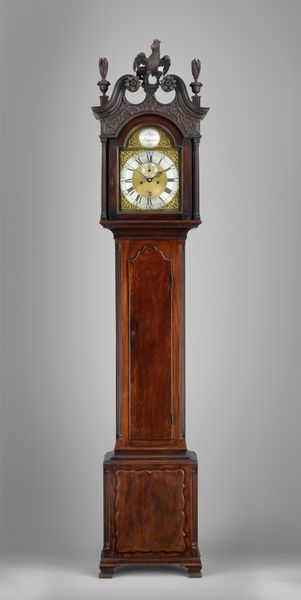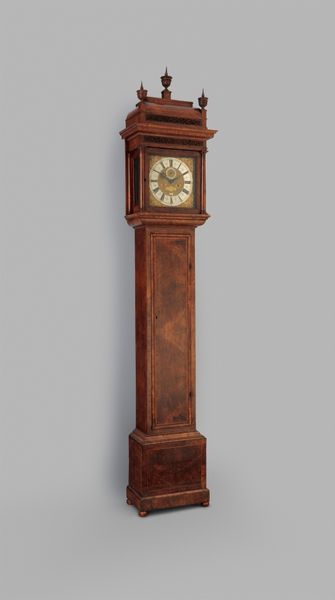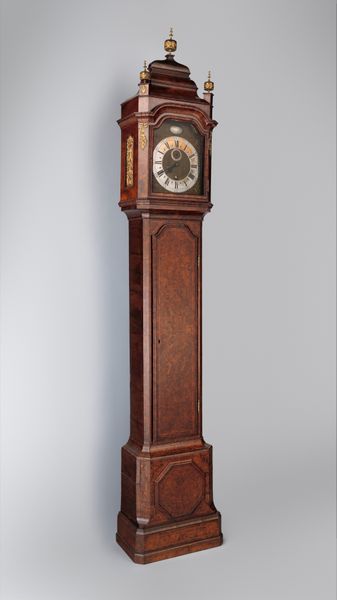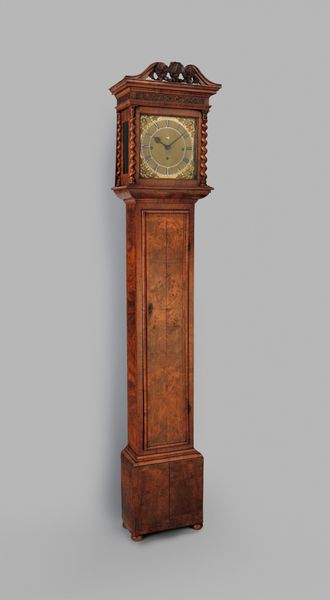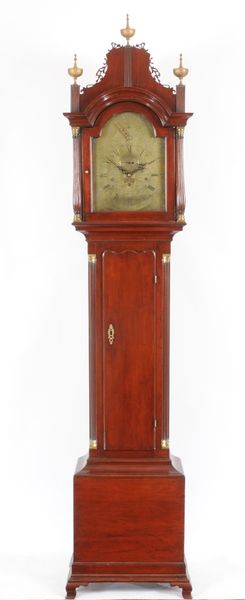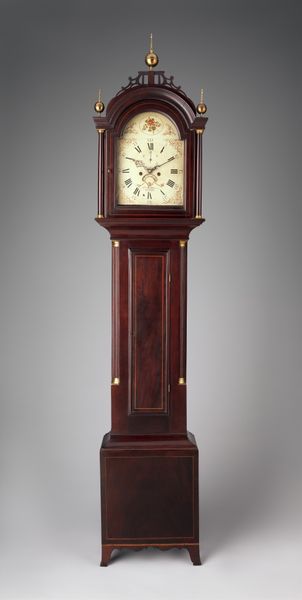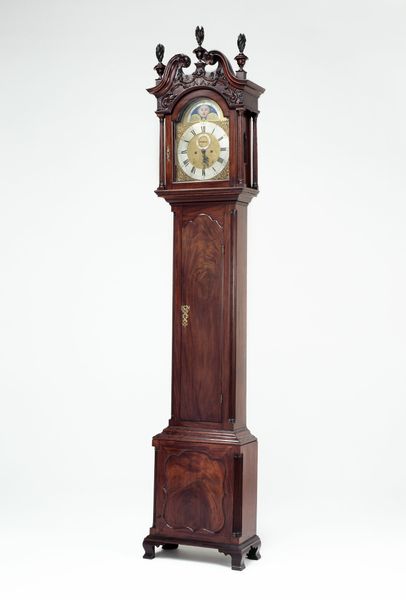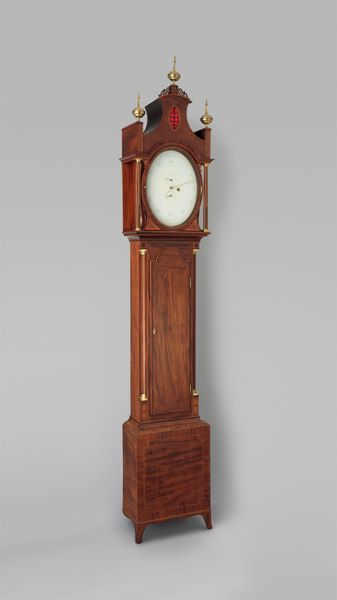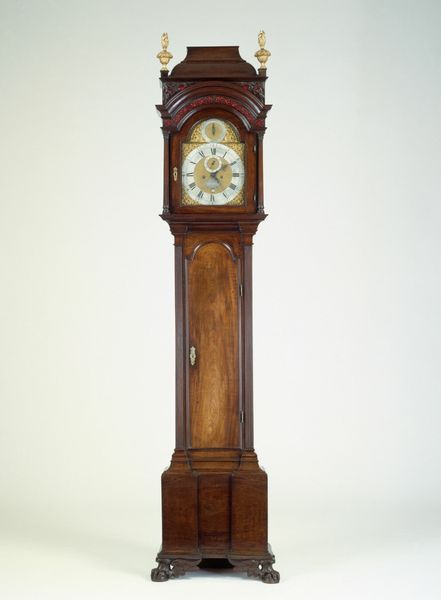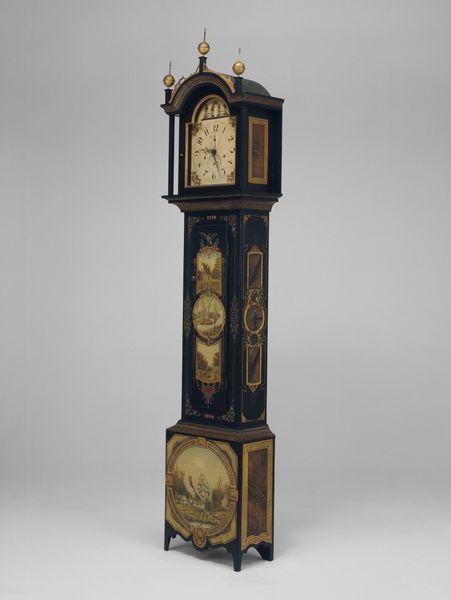
carving, wood
#
neoclacissism
#
carving
#
united-states
#
wood
#
decorative-art
Dimensions: 48 7/8 x 11 3/8 x 6 1/2 in. (124.1 x 28.9 x 16.5 cm)
Copyright: Public Domain
Editor: So, this "Dwarf Tall Clock," dating back to between 1777 and 1780, was crafted by Samuel Mulliken II. It’s currently residing at The Met. It strikes me as oddly…stubby. The name is accurate, I guess. Made of wood and a bit of carving, what initially jumps out at you? Curator: You know, stubby it might be, but it has the upright posture of the period down pat. And there’s something appealing in that un-grandeur! Makes it feel more…human, maybe? It’s from a period where clocks were more than just timekeepers. They were declarations! The craftsmanship here… Did you notice the brass eagle on top? Quite the statement. Wonder what Samuel was aiming for, scaling things down like this. Less intimidating, perhaps? More "homey," even in its Neoclassical lines? Editor: Homey Neoclassical? I never thought I'd hear those words together! You think that eagle represents something specific, or just a general nod to American pride at the time? Curator: The eagle! Definitely national pride. But, also consider this. It's about elevating something – time, the home – through patriotic imagery. It's a complex blend, isn't it? Almost as if it’s trying to reassure someone about the future! Given the Revolutionary context, Samuel could be shouting "Resilience!" Editor: So it's more than just telling time, it's telling a story about that era? Curator: Precisely! And that is precisely what makes an artwork so fascinating. Isn’t that why art always endures? Editor: Makes me want to learn to woodwork, but I might just stick to admiring it for now.
Comments
No comments
Be the first to comment and join the conversation on the ultimate creative platform.
